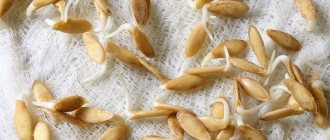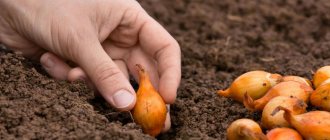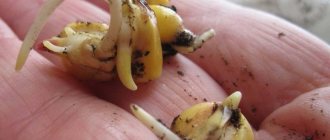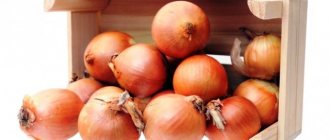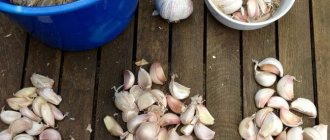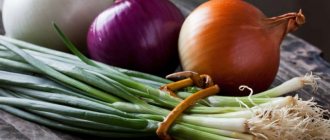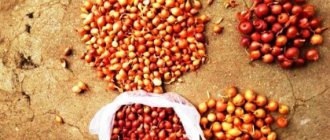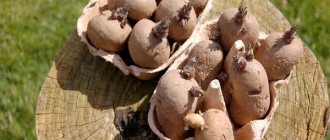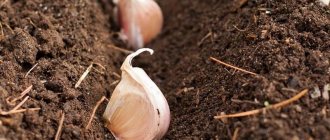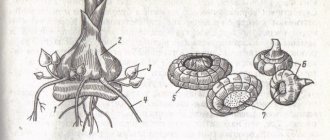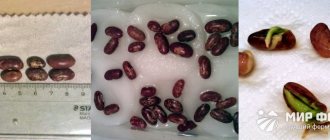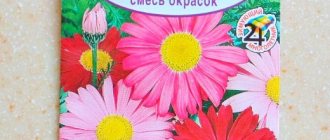Why soak seeds before planting?
Pre-sowing soaking of grains performs several functions at once:
- The outer shell of the seeds softens. The seeds of some crops are very hard, and the sprout needs to spend a lot of resources to break through the hard shell. When soaked, this “shell” softens, which speeds up the germination period.
- Essential oils are destroyed. The grains contain essential oils, which act as a kind of brake and slow down germination. In nature, this is necessary so that the grains do not germinate ahead of time. But in conditions of growing crops on a subsidiary farm, these chemical compounds interfere. Adding certain medications to the soaking water destroys these oils.
- The seed material is disinfected. Most vegetables grown in the garden are exposed to pests and diseases. Often spores and egg clutches remain on the seed coat. Soaking helps destroy infection carriers.
REFERENCE. There is no need to soak seeds that have already been processed at the factory. These are encrusted, plasma, pelleted seeds. Soaking is harmful to them.
When to soak seeds
The procedure must be carried out immediately before landing. That is, immediately after soaking (and drying the seed material) it is necessary to sow. Therefore, the time must be calculated based on the recommended period for processing seeds of a particular crop.
Table. Approximate time for soaking seeds of various crops
| Culture | Approximate soaking time, h |
| Peas | 6 |
| Beans | 6 |
| Black onion | 8 |
| Radish | 10-15 |
| Salad | 10-15 |
| cucumbers | 10-15 |
| Pumpkin | 10-15 |
| Zucchini | 10-15 |
| Tomato | 20-40 |
| Pepper | 20-40 |
| Eggplant | 20-40 |
| Beet | 20-40 |
| Carrot | 48 |
| Celery | 48 |
| Dill | 48-72 |
Thus, pumpkin seeds can be soaked overnight and sowed in the morning. And, for example, peppers need to be soaked 1-1.5 days before sowing day.
ON A NOTE. It is better to sow new seeds, but if you are planting 2-3 year old material, it will be useful to slightly increase the soaking period.
Assessment of germination and germination energy of seeds
Not all the seeds that are in stock can be used. Seeds of most crops retain normal germination from 3 to 8 years (table). If well-dried seeds are stored at a temperature of 0–minus 5°, then their germination will remain for many years. Seeds lose their viability when stored in frost or in conditions of high humidity and temperature. Old seeds that have lost their shine and smell also have reduced germination. Typically, manufacturers and trading organizations indicate on the packaging bags only the expiration date of the seeds (and not the year they were collected). The indication is very slippery. Therefore, it is necessary to check the germination of not only expired seeds, but also “not expired” ones.
| Culture | Retention of germination, years | Germination temperature (minimum–optimal), °C | Minimum germination period (period of determining germination energy), days | Limit period of germination (period of determination of germination), days |
| Watermelon | 4–8 | 15–25 | 5 | 14 |
| Eggplant | 3–5 | 13–25 | 7 | 13 |
| Bean | 4–6 | 3–20 | 4 | 9 |
| Peas (brain varieties) | 3–6 | 4–20 | 3 | 6 |
| Melon | 5–6 | 15–22 | 5 | 10 |
| Zucchini | 6–8 | 10–22 | 3 | 9 |
| Cabbage, cauliflower, Brussels sprouts | 4–5 | 2–22 | 3 | 8 |
| Kohlrabi | 4–5 | 2–25 | 3 | 6 |
| Sweet corn | 2–3 | 12–22 | 4 | 7 |
| Onion, leek | 2–3 | 2–18 | 6 | 15 |
| Carrot | 2–3 | 3–25 | 10 | 17 |
| Cucumber | 5–8 | 13–25 | 4 | 8 |
| Parsnip | 1–3 | 2–20 | 10 | 16 |
| Squash | 4-5 | 10-22 | 3 | 9 |
| Parsley | 2–3 | 3–25 | 9 | 17 |
| Pepper | 3–4 | 13–25 | 7 | 12 |
| Rhubarb | 2–3 | 2–22 | 5 | 12 |
| Radish | 3–4 | 1–20 | 3 | 7 |
| Turnip, rutabaga, radish | 3–5 | 2–20 | 3 | 4-6 |
| Salad | 3–5 | 2–18 | 4 | 10 |
| Celery | 2–3 | 3–20 | 9 | 20 |
| Beetroot, chard | 3–5 | 5–22 | 7 | 14 |
| Asparagus | 4–5 | 8–25 | 12 | 24 |
| Tomato | 4–5 | 10–25 | 5 | 9 |
| Pumpkin | 5–7 | 10–22 | 3 | 9 |
| Dill | 2–4 | 8–12 | 7 | 14 |
| Vegetable beans | 4–7 | 10–20 | 4 | 9 |
| Chicory salad | 3–4 | 3–22 | 6 | 12 |
| Spinach | 2–4 | 2–15 | 4 | 10 |
| Sorrel | 2–3 | 1–18 | 8 | 12 |
Zoned varieties produce seeds with greater germination capacity and germination energy.
To test seeds for germination, place a piece of linen fabric folded in several layers on a cuvette or plate. Seeds are placed on it (from 10 to 50 pieces, depending on the size) and covered with the other end of the fabric. Then the fabric is moistened, preferably with a very weak (pale pink) solution of potassium permanganate, and the excess is drained. Place in a warm (25–30°C) place. The fabric is constantly kept damp and rinsed every 2-3 days. If after 20 days (or the maximum germination period - Table 4.2) the seeds do not germinate, the entire batch. seeds are rejected.
The number of sprouted seeds in relation to their total number determines the percentage of germination. If germination is less than 75–85%, the seed sowing rate is increased. If the germination rate is less than 50%, it is better not to use the seeds.
Seeds of leeks, onions, celery, parsnips and spinach quickly lose their viability, so it is advisable to purchase seeds of these crops, fresh ones, annually. For sowing cucumbers, 2-3 year old seeds are preferable.
Germination energy. Characterizes the ability of seeds to germinate together. Expressed as the percentage of sprouted seeds during the minimum germination period compared to the total number of sprouted seeds. To assess the germination energy of seeds, they are germinated at a certain temperature, observing for the minimum period established for the germination of each crop. Calibrated, larger seeds usually have greater germination energy.
Increased germination
To increase the germination and germination energy of seeds, use:
• Wolfen-thiuram 85 in an amount of 0.3 g per 100 g of seeds. The seeds are placed in a hermetically sealed jar (such as a jam jar) and shaken vigorously for about 5 minutes. This dry dressing is effective for beans, peas, and tomatoes;
• plant growth stimulants, for example Epin, Humiks.
How to choose the best time according to the lunar calendar
The choice of a specific sowing day depends on the lunar calendar.
There is a rule: those crops that grow upward (tomatoes, peppers, cabbage, etc.) are planted on the growing moon. And those crops that grow downward (carrots, radishes, etc.) are planted on the waning moon.
Therefore, on the same days it is necessary to soak the seeds of the corresponding crop. It would be ideal if, for example, you soaked eggplant grains and planted them on the growing moon.
But it won’t be a big deal if you soak on the waxing moon and sow on the waning moon, since the day of germination is actually considered the day of sowing.
More information about sowing dates and the lunar calendar is presented in the article “When to plant seedlings in 2021, planting calendar.”
How to prepare seeds for the procedure
The process of preparing for the procedure is not complicated.
Firstly , you need to prepare planting material. Sort the grains by variety and make appropriate notes. This way you can understand what grows better.
Secondly , prepare your materials. You will need a container (any container will do), rags (gauze, bandage, cotton pad, etc.), active drug and settled water (it is best to use melted snow).
The following is the algorithm:
- You place the seeds in gauze.
- Moisten it with the prepared solution.
- Wrap and place in a container.
- Then cover with a transparent lid or plastic bag and place in a warm (25 degrees) dark place.
NOTE! Excess liquid must be drained. During the procedure, it is necessary to ventilate every 4 hours and, if necessary, moisten the rag.
Soaking seeds when changing contrasting temperatures
The method of long-term changes in contrasting temperatures, which increases the likelihood of seed germination, is based on the same principle. Now the seeds will be in a cold and hot environment alternately, and even over a period of time. This process will help the seeds of those plants that take too long to germinate.
For example, you can keep seeds on a damp mat or in hydrogel for 2-3 weeks in a warm place with a temperature of about 20°C, and then put them in the refrigerator for a month at a temperature of 3-4°C. The opposite option is also possible, when the seeds are first kept in the refrigerator for 1-2 weeks, and then placed in a warm room until planting.
Which plant seeds are best soaked before planting?
Soaking will not harm any crop, but special attention should be paid to those plants that have a particularly hard outer shell and that do not germinate well on their own.
How to soak cucumbers
First, the grains are dried. To do this, they are placed near the battery for a couple of hours. Then sorting is carried out. To do this, dilute a teaspoon of salt in a glass of water and add seeds there. The grains that float to the surface are thrown away.
After this, the selected material is soaked in the active solution for 12 hours.
Soaking tomatoes
Tomatoes need to be soaked for at least 24 hours. During this time, the grains will soften, the sprouts will be saturated with nutrients and the essential oils will be destroyed.
When soaking tomatoes, experienced gardeners advise treating each variety separately in order to identify the most actively growing variety of tomatoes.
It is also very important to regularly ventilate the entire structure so that the seeds do not ferment.
How to Soak Pepper Seeds
Soaking pepper seeds is no different from the procedure carried out with tomato grains. The optimal period of stay in the liquid solution is 1 day. For old seeds, the time can be increased to 36-40 hours.
More information is available in our article “Soaking pepper seeds before planting, when and how to soak?”.
How to soak carrots
Carrots are different in that they are very difficult to sprout. Therefore, it is recommended to soak the grains of this crop for 2 days. You can also additionally treat for half an hour with a solution of potassium permanganate.
Soaking beet seeds
Beets can be soaked at the same time as tomatoes. The maturity date of these crops coincides. If you have a container divided into sections, then peppers, tomatoes and beets can be soaked in one container.
ON A NOTE. Beet grains must be pre-sorted, since this crop often has a lot of low-quality planting material.
How to soak dill
Dill (like other greens) has a high percentage of essential oils in the grains, which slows down its germination. Because of this, these crops need to be soaked for two days.
Such a long procedure will inevitably lead to drying out of the rags soaked in the solution, so do not forget to additionally moisten the fabric every 4-6 hours. Also, ventilate so that the seeds do not become acidic.
Soaking seeds in a thermos with hot water
If you are afraid of dipping seeds into unknown substances to regulate the germination rate, you can get by with plain water without any additives. True, then we will have to experiment with its temperature - we must somehow wake up the “lazy” seeds!
For example, placing them in a thermos with hot (45-50°C) water for 20 minutes. Then the seeds are taken out, rinsed in cool running water and dried. Done - hot water helped your seeds get rid of excess oils in the shell that prevent water flow and swelling.
What is the best way to soak seeds?
There are several proven products in which you can soak seeds.
In hydrogen peroxide
Peroxide is a great option. The product not only activates growth, but also destroys pathogens and egg laying of pests.
Read more in our article “Soaking seeds in hydrogen peroxide before planting.”
In phytosporin
Diluted 1 to 2. Soaking time – 2 hours for tomatoes, peppers, beets. For pumpkin, the period may be slightly longer; you need to check the readiness of the seeds.
In epin
Dosage: 3 drops of epin per 100 ml of water. The seeds need to be soaked for 4 to 6 hours, depending on the complexity of the seed.
In aloe juice
The juice is diluted with water 1 to 1. But, if you get the juice from a home plant, then it needs to be kept in the refrigerator for 7 days.
In potassium permanganate
The solution should be pale pink. Approximate proportions: 1 g per 200 ml of water. You need to soak for no more than half an hour, after which the seeds MUST be washed.
In succinic acid
The solution is prepared as follows: 2 g of the active substance is soaked in warm water. After obtaining the suspension, you need to increase the volume of liquid to 1 liter. The duration of the procedure with succinic acid is at least 24 hours.
In boric acid
The dosage of this product is the same: 2 g per 1 liter. Tomato, beet and pepper grains are soaked for 12 hours. Carrots and cucumbers – 24 hours.
In vodka
The grains are soaked for a quarter of an hour in undiluted vodka. You can also use any pharmacy alcohol tincture.
In chlorella suspension
The proportions are 1 to 2. “Simple” seeds are kept in the solution for 6 hours, hard-to-emerge seeds - 20 hours. Please note that both the suspension and the water should be approximately the same temperature.
Method 2: Soak seeds in compost tea
You can also use AKCH (aerated compost tea) to soak seeds to speed up their germination. This is the same growth stimulator, but prepared with your own hands. Its effectiveness is based on a high concentration of microorganisms beneficial to the plant, however, to prepare a magical solution, you will have to tinker.
You will need:
- non-chlorinated water (rain, river, melted snow) – 2 l;
- sweetener (molasses, kvass wort, molasses, or even jam) – 10 ml;
- mature compost – 70 g (a glass of dry matter).
Mix all the ingredients in a three-liter jar, into which then lower the spray tubes of a compressor (for example, an aquarium or a specialized one from a farm store) for aeration. The compressor is left to work for a day - the finished “tea” should have the smell of fresh earth and abundant foam.
Then place the bag of seeds in the ACH for a day - they should swell and be “overgrown” with microorganisms and compost particles. Some gardeners advise not to even wait until the end of the process, but to hang a bag of seeds on a thread in the “tea” being prepared at the stage of aeration, so that the seeds receive an additional shake. Such seeds germinate an order of magnitude faster and more efficiently than untreated ones.
According to the above scheme, compost infusion can be prepared without aeration - simply mix all the components. It will contain fewer microorganisms beneficial to the plant, but the solution will still remain an effective means for accelerating seed germination.
How to soak in biological solutions?
A biosolution is a whole complex of active mineral substances that have a beneficial effect on grains.
If there is such an opportunity, then it is better to use these drugs. The most effective are Zircon, Epin, Humate.
The process of carrying out the procedure is no different from a similar procedure using folk remedies. In the same way, you need to prepare a solution, moisten a rag with it and put the seeds inside.
Only the proportions and timing of the procedure differ. For example, to soak carrot seeds, 6 drops of Epin should be diluted in a glass of water. The residence time of carrots in the prepared liquid is 24 hours.
REFERENCE. When using biological solutions, you must strictly follow the instructions from the manufacturer so as not to ruin the planting material.
Answers to frequently asked questions
Is it possible not to soak the seeds?
The procedure is not needed at all for those grains that have already been processed by the manufacturer. It is better to soak all other seeds so as not to lose money due to ungerminated plants.
How long should planting material be kept in water?
It all depends on the specific crop and the “age” of the seeds. In general, pea grains are processed the fastest, dill takes the longest to process.
What if some of the seeds did not respond to the procedure? What to do with them?
Throw it away. Most likely, these are dummies that will no longer sprout. You shouldn't waste time on them.
Which product is better to use?
There is no clear answer. Each drug has its own advantages. Choose the most affordable product. The main thing is to maintain the proportions when preparing the current solution so as not to “burn” the planting material.
What to do if the soak ends on a new moon (full moon)? Is it possible to sow?
It is possible, since the day of soaking the grains can be considered the day of sowing.
